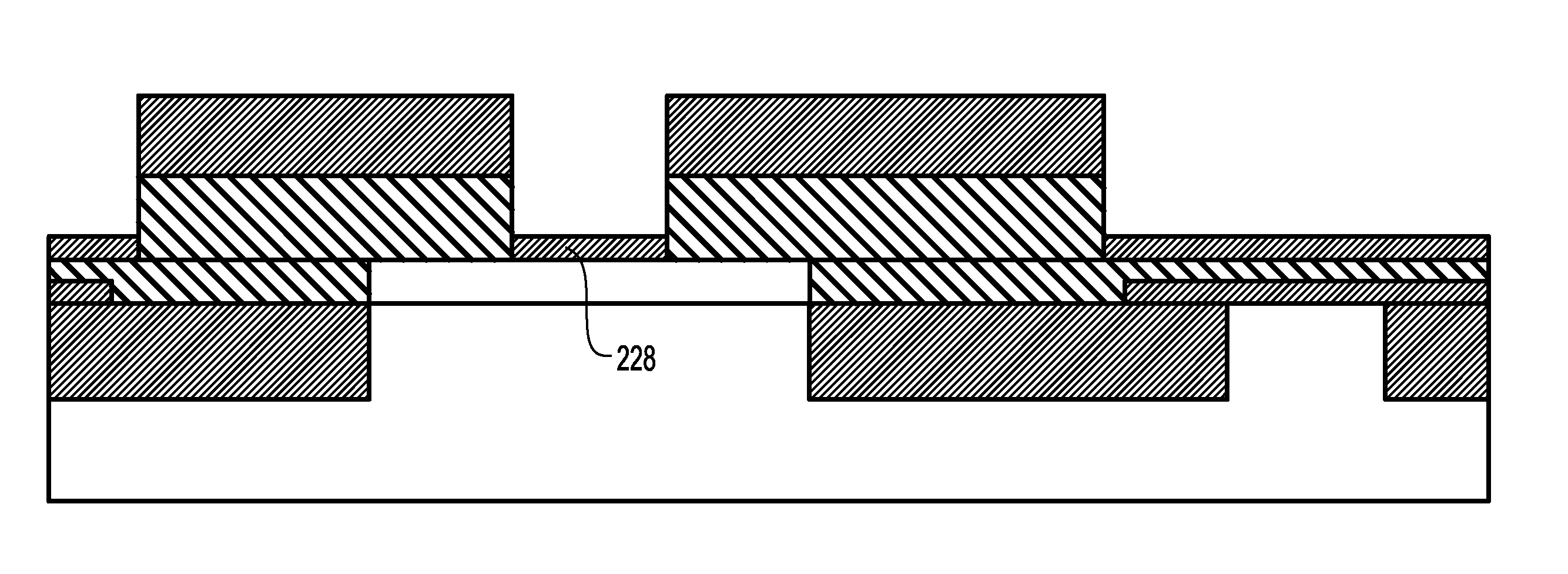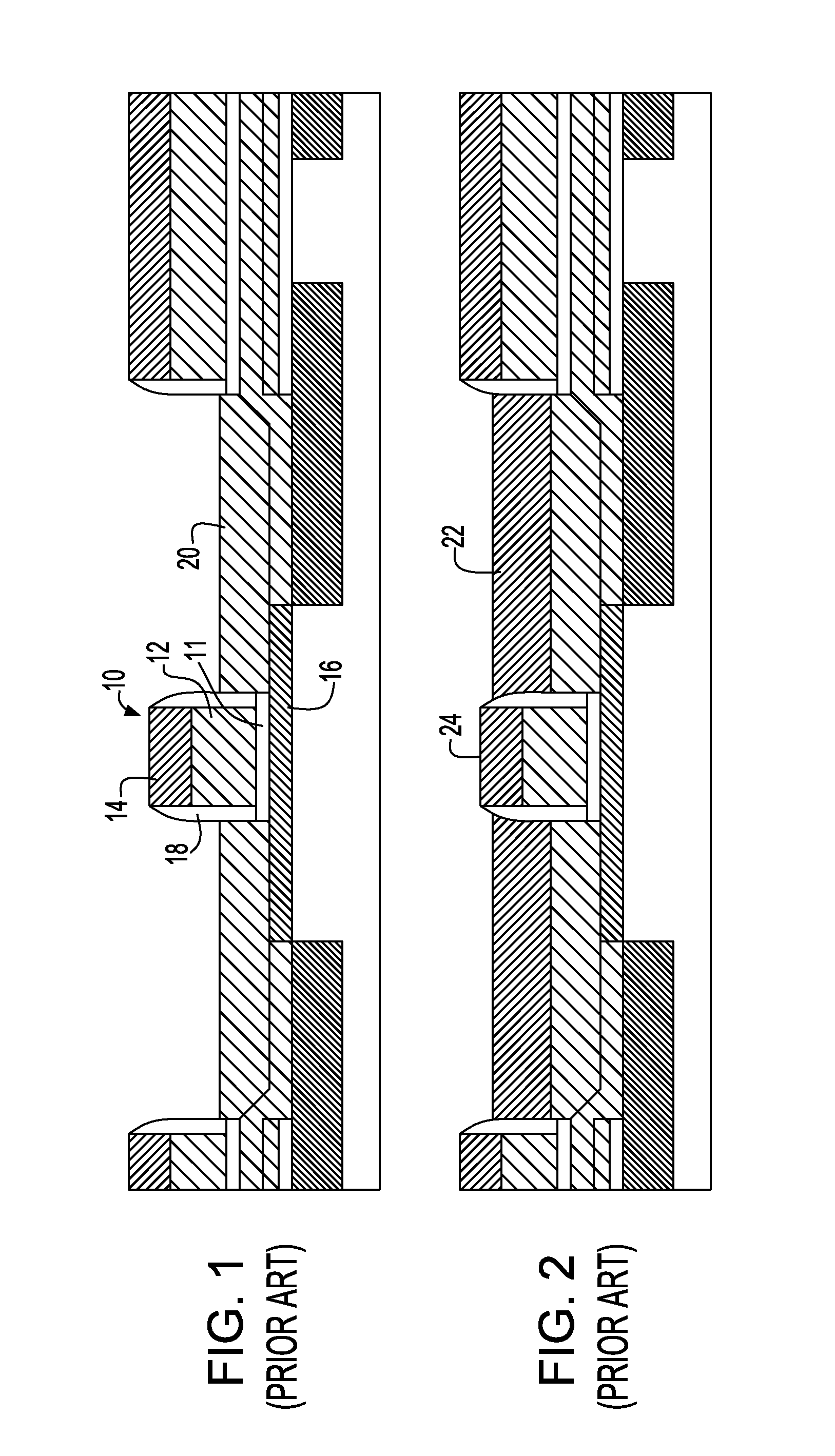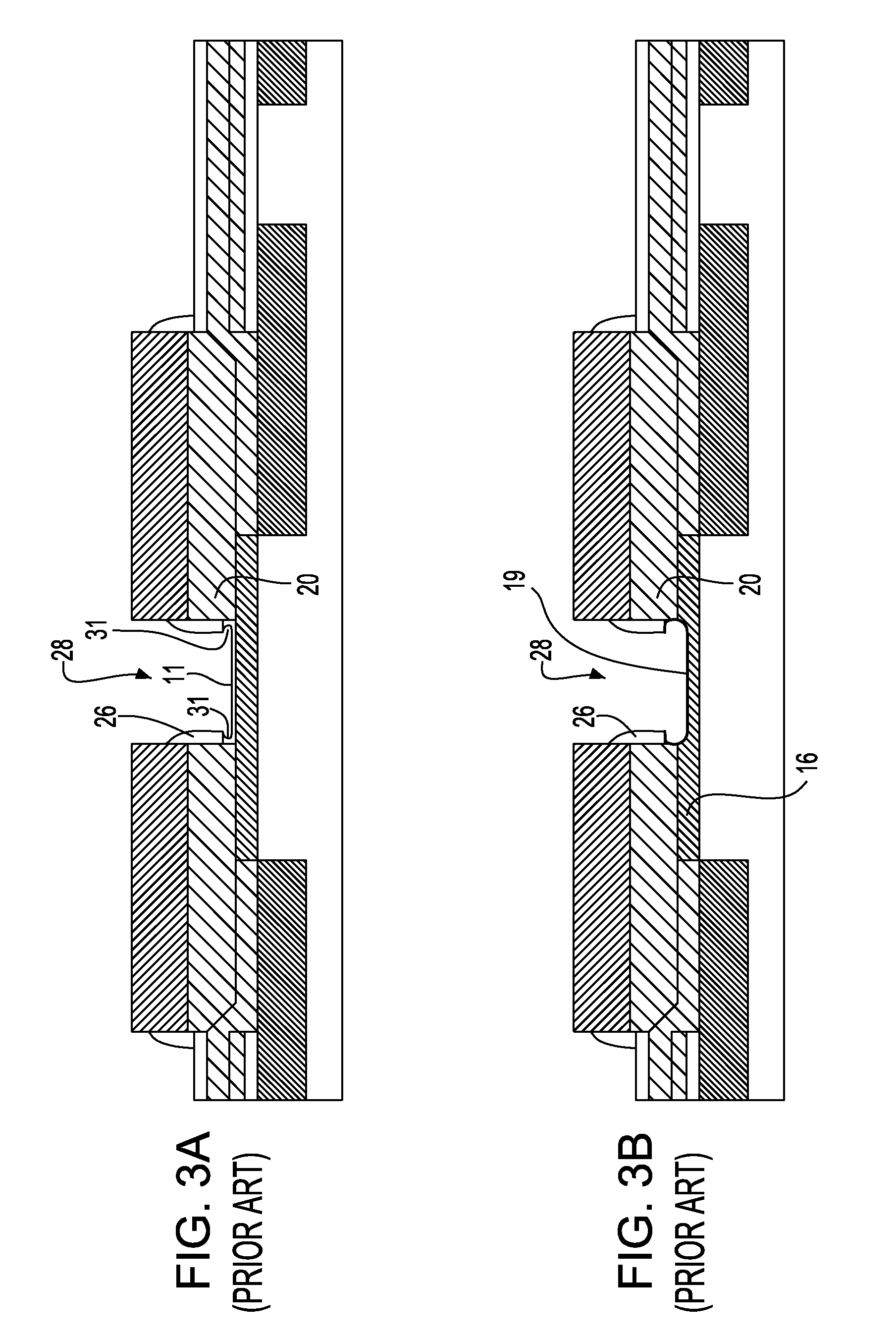Methods of fabricating bipolar transistor for improved isolation, passivation and critical dimension control
a bipolar transistor and passivation technology, applied in the field of semiconductor devices and processing, can solve the problems of reducing the thickness of the transistor, reducing the service life of the transistor, and reducing the use of the transistor which eventually results from the fabrication process
- Summary
- Abstract
- Description
- Claims
- Application Information
AI Technical Summary
Benefits of technology
Problems solved by technology
Method used
Image
Examples
Embodiment Construction
[0014]Accordingly, methods are provided herein which address the above-described difficulties faced by the processing described above in the background. In the embodiments of the invention described herein, a first dielectric spacer which is formed on a sidewall of a dummy emitter mandrel is removed after the raised extrinsic base layer and covering dielectric layer are formed. Thereafter, a second dielectric spacer is formed within the opening that results. In other words, the first spacer is used as a replaceable or disposable spacer to protect the sidewalls of the raised extrinsic base layer and covering dielectric layer during the removal of the dummy emitter mandrel. The second dielectric spacer, not being subjected to damage from RIE processing, therefore, provides a desired level of isolation between the raised extrinsic base and the emitter and tighter emitter final critical dimension control than that which could be achieved through the technique described above as backgrou...
PUM
 Login to View More
Login to View More Abstract
Description
Claims
Application Information
 Login to View More
Login to View More - R&D
- Intellectual Property
- Life Sciences
- Materials
- Tech Scout
- Unparalleled Data Quality
- Higher Quality Content
- 60% Fewer Hallucinations
Browse by: Latest US Patents, China's latest patents, Technical Efficacy Thesaurus, Application Domain, Technology Topic, Popular Technical Reports.
© 2025 PatSnap. All rights reserved.Legal|Privacy policy|Modern Slavery Act Transparency Statement|Sitemap|About US| Contact US: help@patsnap.com



